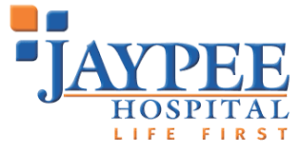- Her knees were bent at 90 degrees and body at 45 degrees towards the ground
- Doctors successfully performed complicated hip and knee corrective realignment surgeries
13th August, 2018, Noida: A team of orthopaedic surgeons led by Dr. Gaurav Rathore, Associate Director, Institute of Orthopaedics, Jaypee Hospital Noida, successfully performed complicated hip and knee corrective realignment surgeries on 16-year-old girl Sajida Sallal Hatem. The Iraqi national was born with Spondylo Epiphyseal dysplasia (SED), a rare genetic bone growth disorder that results in short stature and skeletal abnormalities that primarily affect the spine and long bones of the arms and legs.
Explaining about the case Dr. Rathore said, “Sajida Sallal Hatem’s case is a classic one of Spondylo epiphyseal dysplasia, an inherited bone growth disorder which affects the spine (spondylo) and the ends (epiphyses) of long bones in the arms and legs. When I first met Sajida in 2016, her body was in the foetal condition where her back was curved, the head was bowed, and the limbs were bent and drawn up to the torso. The 14 year old patient was suffering from multiple congenital and developmental problems with bilateral knee contracture (bent knees) and high developmental dysplasia hip”.
In 2010, she underwent knee surgery in Iraq as her knees were bent at 90 degrees and not strong enough to take the pressure of the body. Due to lack of proper medical facilities and expertise, the surgery was unsuccessful. It further worsened her condition and restricted her mobility, leaving her completely bed ridden, Dr. Rathore further explained.

“After proper evaluation of her reports and considering her tender age, we decided to operate her in two stages. The primary reason was to see if smaller and simpler intervention would help to achieve enough correction in order to improve her walking mannerism. In the first stage, we decided to perform the knee surgery called supracondylar osteotomies to correct the valgus knee and straighten it to allow her to stand on her legs and walk. Her knee surgeries were successful and post complete recovery, she was discharged. In the second stage, after around 18-24 months, we decided to perform the hip surgery to correct her upper body posture which was 45% bent towards the ground.’’ said Dr. Vipul Aggarwal, Associate Consultant, Trauma and Joint Replacement Surgeon.
Further explaining the surgery process, Dr. Rathore said, “On 1st August, we performed a hip surgery on her called Modified Bilateral Campbels Release to release the tight muscles and straighten her hip bone to keep it aligned with the body. The patient had stooped posture due to kyphosis (abnormally curved spine) thus, with help of the surgery we decided to correct and straighten both her hips and knees in line with the back to improve her gait. Her surgery was successful and as part of post care, intensive physiotherapy sessions were provided to the patient for strengthening her core and gluteal muscles. Sajida was able to walk from the very next day of the operation with help of support. We recommended activities like hip stretching and use of a brace for mobilisation and was discharged with stable vitals.”
After the successful surgery, Ms. Hatem’s said, “I was born with congenital dwarfism as a result of which I had a short stature. I was unable to perform even the basic tasks and always required someone’s support. Thus, my family decided to bring me to India for further treatment. After hearing of previous critical cases operated successfully by Dr. Rathore and his team, we came to Jaypee Hospital for treatment. My family and I are really thankful to the doctors here at Jaypee Hospital because of whom I am able to walk on my own now and can perform most of my daily tasks. The doctors here have given my life a new beginning.”
Such rare and complex surgeries being performed in Jaypee Hospital, Noida is a demonstration of increasing medical expertise and advanced healthcare facilities that India has to offer to the world. Earlier, several such patients would travel to United States of America and Europe for such complex treatments but now they are choosing India as their preferred destination as their confidence in our doctors and hospital is rising.
